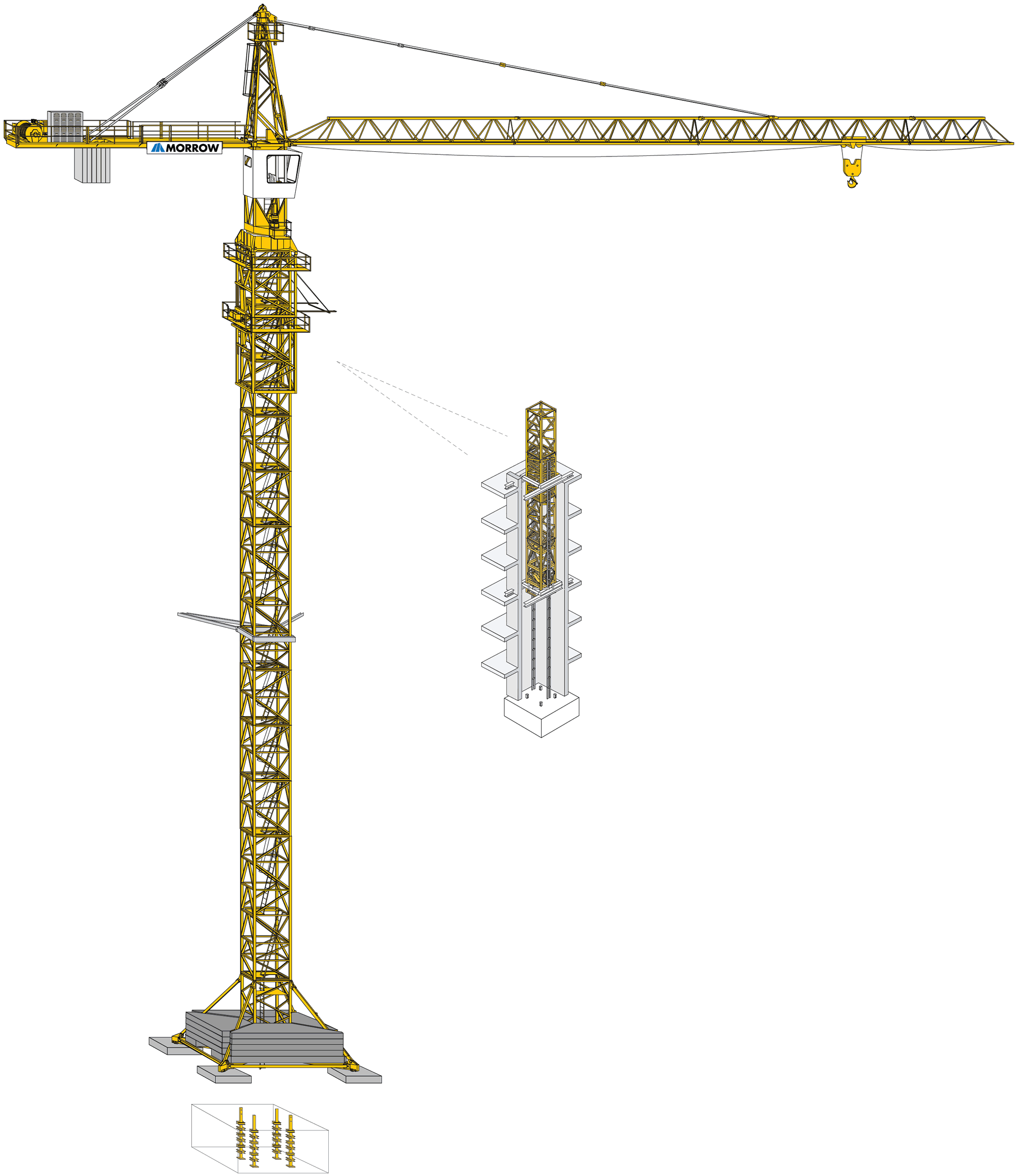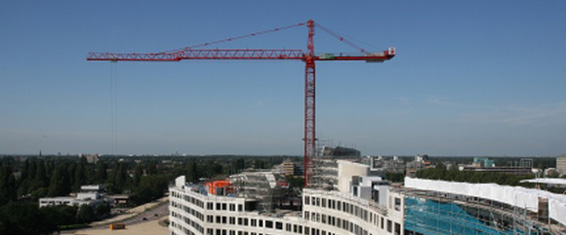Direct importation from China can be organised to ensure buyers get the best rates.
Tower Crane Benefits
The ultimate benefit of self-erecting tower crane usage is, quite simply, value — savings (in construction costs resulting from using the crane) that outweigh cost (to rent/own and operate the crane).
Crane owners and users generally report a reduction in manual labor hours equivalent to four or more persons. They also report shortened job completion times — primarily during the framing cycle — of 15% or more, and reduced need for multiple pieces of material handling equipment. And these cranes are much less impactful to the environment as well.
The benefits that drive these results follow, and are accomplished by the crane features and uses described previously:
Improved Effeciency and Productivity
- for crews that rely on their carpenters to perform the requisite manual labor to get their jobs done, a crane can remove much of the manual labor performed by carpenters freeing them up to focus on what you pay them to do — carpentry; the result is an improvement in productivity that also improves carpenters’ morale and leaves them much fresher at the end of a long day
- use of dedicated staging areas results in a more efficient assembly of construction components (wall sections, roof sections, built-up beams, etc.); materials required in the staging area can be placed in the staging area when needed, and, since navigation of other material handling equipment (like telehandlers) is not necessary, the staging areas do not continually have to be moved or disturbed to allow passable access for that equipment
- crane does not require a dedicated operator; rigging and operating can be done by a single person and, with the use of the remote control, the operator can move with the load, reducing the need for someone to “guide” the operator
- single-person operation for many tasks that otherwise would require multiple people (lifting and setting trusses, lifting and setting rafters, etc.)
- minimal footprint of crane leaves much more room on jobsite for material storage, staging areas, etc.
- materials do not need to be handled or moved multiple times to make way for mobile equipment; material can be initially delivered to a “receiving” location and then dispersed a single time to the location of need when needed — the right material, the right quantity, when needed, delivered once
Decreased Equipment and Labor Costs
- a single self-erecting tower crane eliminates the need for multiple pieces of material handling equipment like mobile cranes, telehandlers or all-terrain forklifts, boom trucks, etc.
- reduced fuel costs to operate material handling equipment
- can be used on jobsites with tight boundaries or impassable terrain where the only real material handling option typically is manual labor
- a crane is a “model employee”:
- it is on-time to work
- it doesn’t talk back
- it is reliable and dependable
- it never gets tired
- it won’t ever file a workers’ comp claim
- for crews that employ dedicated laborers, the many crane uses (trash removal, material handling and lifting, etc.) reduce much of the need for laborers
- the ability to place materials and assemblies anywhere on the jobsite, including inside the structure (and not just at the perimeter, a limitation of telehandlers for instance), reduces the need for manual labor to perform that task
- quick, easy setup
- jobsite safety is improved due to the decreased need for manual tasks, also drastically reducing workers’ comp claims
Environmental Benefits
- operate on electricity, a much cleaner and quieter option than fuel
- no need to store fuel on-site
- does not leave deep ruts or disturb surrounding terrain as a result of machinery navigating the jobsite





Leave a Reply